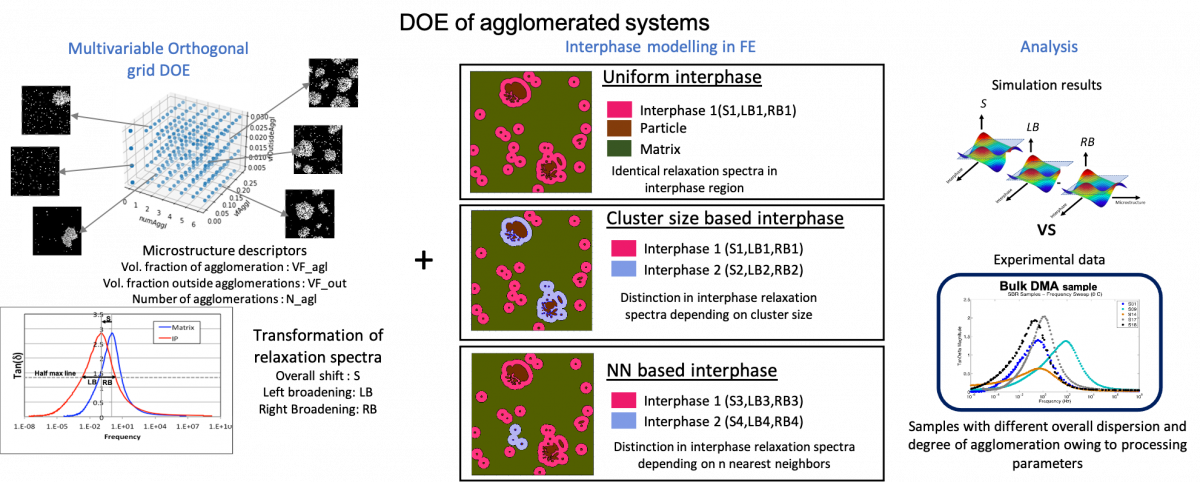In nanocomposites, interfacial area can be thought of as sites of interactions for polymer chains. Molecular relaxation spectra of chains adjacent to the interface, called interphase, changes depending on the nature of these interactions. Extent and decay of interphase can be fundamentally different around an isolated particle, smaller clusters and bigger agglomerations owing to large difference in area of interaction sites around these. At the same time, presence of agglomerations in microstructure (MS) is anticipated to influence interphase(IP) percolation, hence dielectric permittivity and loss response. Highly agglomerated systems can have an overall reduced interface per unit volume fraction of nanoparticles and can result in overall poorer properties compared to microstructures with identical total volume fraction in well dispersed form. Degree of agglomeration depends on processing parameters such as mixing energy and mixing speeds. Knowing how agglomerations affect overall properties can help establish an important link in the process-property prediction framework.
We have simulated a grid DoE across MS and IP space, a total of 1540 points, using continuum scale finite elements analysis. We were able to identify overall trends and explain variance in interphase percolation, dielectric permittivity and loss with respect to size and number of agglomerations for various levels of total volume fraction and across types of interphases. Types of interphases considered were based on interfacial interaction(attraction or repulsion) and loss characteristics(lossy or not). A baseline set of two phase systems, without interphase, were also simulated and compared with above to understand the crucial role interphase plays for property prediction.

Active Researcher on the Project:
Relevant Publications
[1] Ramanathan, T., Liu, H., & Brinson, L. C. (2005). Functionalized SWNT/polymer nanocomposites for dramatic property improvement. Journal of Polymer Science Part B: Polymer Physics, 43(17), 2269-2279.
[2] Liu, H., & Brinson, L. C. (2006). A hybrid numerical-analytical method for modeling the viscoelastic properties of polymer nanocomposites.
[3] Qiao, R., & Brinson, L. C. (2009). Simulation of interphase percolation and gradients in polymer nanocomposites. Composites Science and Technology, 69(3-4), 491-499.